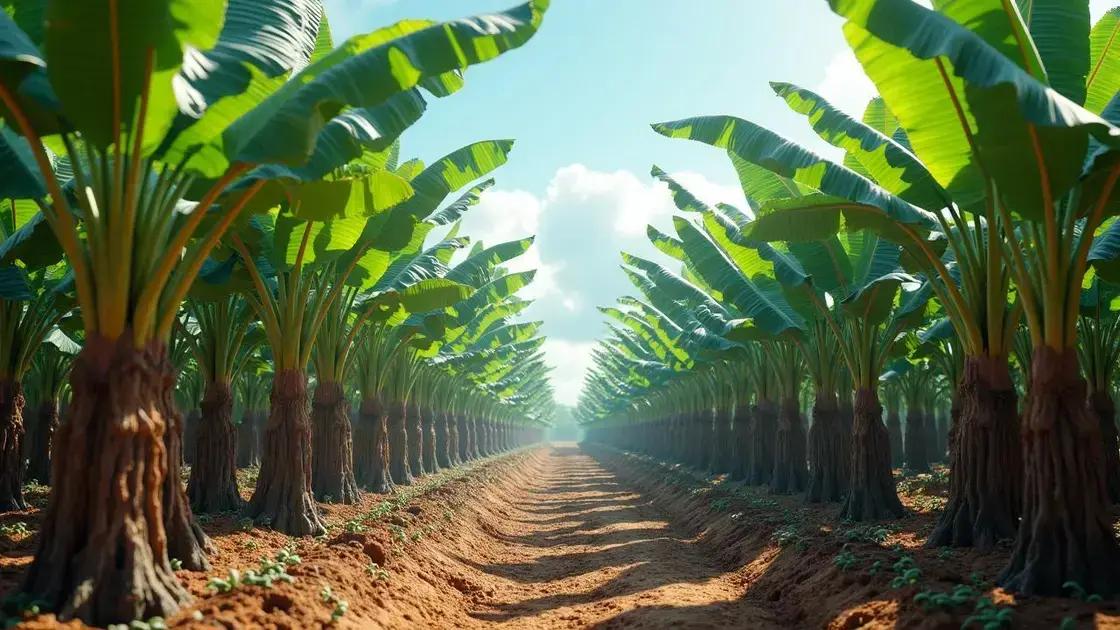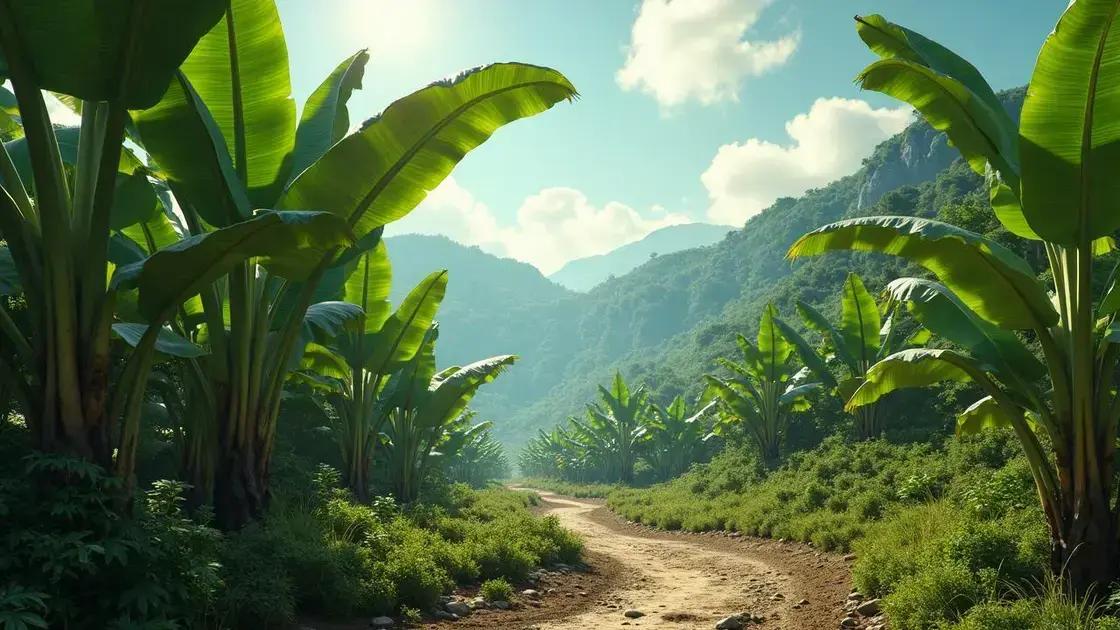How to Care for Banana Plant: 5 Essential Tips for Success
How to care for banana plant enthusiasts often wonder what it takes to grow these tropical beauties successfully. Beyond just watering, multiple factors influence how well your banana plant thrives from soil choices to sunlight. Explore the five essential aspects that will elevate your banana care routine, ensuring vibrant foliage and delicious fruit.
Table of Contents
ToggleUnderstanding the water requirements for banana plants
Understanding the water requirements for banana plants is crucial for fostering healthy growth and abundant yields. Banana plants thrive in a consistently moist environment, so proper watering can make all the difference. Here’s what you need to know to ensure your banana plants are adequately hydrated:
Optimal watering techniques for your banana plants
1. **Frequency**: Banana plants generally require watering about 1–2 times a week, depending on the climate, soil type, and grow location. Warm, sunny conditions may demand more frequent watering.
- Check the soil moisture regularly. An inch of soil should be dry before watering again.
- During hotter months, consider increasing your watering schedule.
Watering methods that promote healthy roots
2. **Watering method**: Use a soaker hose or drip irrigation to deliver water directly to the roots. Avoid overhead watering to prevent fungal issues.
- Water in the early morning or late afternoon to minimize evaporation.
- Ensure that water penetrates deep into the soil to encourage deep root growth.
Signs of overwatering and underwatering
3. **Identifying issues**: Knowing how to recognize signs of improper watering can help you maintain the health of your banana plants:
| Condition | Signs |
|---|---|
| Overwatering | Yellowing leaves, wilting, and root rot. |
| Underwatering | Browning tips, drooping leaves, and stunted growth. |
Enhancing soil moisture retention
Incorporating good soil contains organic matter which helps retain moisture. Consider using mulch to support consistent moisture levels around your banana plants.
Additional resources
For further insights, exploring indoor gardening techniques can provide valuable tips for banana plant care, especially if you plan to cultivate them indoors.
By paying close attention to your banana plant’s water requirements, you can create a thriving environment that leads to fruitful harvests and robust health. Proper care ensures your banana plants flourish and produce delicious fruit to enjoy.
Choosing the best soil for growing banana trees

Choosing the best soil for growing banana trees is essential for ensuring robust growth and fruitful harvests. The right soil provides the necessary nutrients and drainage that banana plants crave. Here, we will explore the key factors to consider when determining the ideal soil for your banana trees.
Critical soil components for healthy banana trees
Your soil should contain a mix of the following to support optimal growth:
- Loamy texture: A balanced mix of sand, silt, and clay helps retain moisture while providing proper drainage.
- Organic matter: Adding compost or well-rotted manure improves nutrient content and soil structure.
- pH level: Aim for a slightly acidic to neutral pH (between 5.5 and 7.0) to promote optimal nutrient absorption.
Enhancing soil drainage for banana plants
Maintaining good drainage is crucial to prevent root rot. Here are some effective strategies:
- Use raised beds to enhance drainage, especially in heavy clay soils.
- Incorporate perlite or vermiculite to improve aeration and moisture retention.
- Plant banana trees in well-draining pots if growing indoors to ensure excess water can escape.
Signs of inadequate soil conditions
Knowing when your soil conditions are harming your banana plants can save them from potential disaster:
| Issue | Signs |
|---|---|
| Poor drainage | Standing water or soggy soil, yellowing leaves, and root rot. |
| Low nutrient content | Pale leaves, stunted growth, and no flowering or fruiting. |
Additional tips for selecting banana-friendly soil
Consider using commercial potting mixes specifically designed for tropical plants, which can provide a beneficial balance of nutrients and drainage capabilities.
For more detailed insights, exploring indoor gardening techniques can provide valuable ways to optimize your growing environment.
By focusing on the right soil composition, you can set the foundation for your banana trees to flourish, resulting in healthy plants and bountiful harvests.
Essential sunlight needs for healthy banana plants
Essential sunlight needs for healthy banana plants are crucial to fostering their growth and productivity. Banana plants thrive in bright, warm environments, making sunlight one of their most critical requirements. Here’s a comprehensive guide to understanding their sunlight needs.
Optimal light conditions for banana plants
Banana plants need:
- **Full sunlight**: Ideally, they should receive 6 to 8 hours of direct sunlight each day.
- **Warm temperatures**: A range of 75°F to 95°F encourages optimal photosynthesis.
- **Avoiding harsh conditions**: While they love sunlight, extreme heat can scorch leaves, so some shade during the hottest part of the day can be beneficial.
Signs your banana plant needs more sunlight
Recognizing when your plant isn’t getting enough light can help you take action:
- **Yellowing leaves**: This may indicate that the plant is struggling to photosynthesize.
- **Stunted growth**: Plants not receiving adequate light can halt their growth progress.
- **Lack of fruiting**: A banana plant that doesn’t flower or produce fruit may be lacking sufficient light.
How to ensure your banana plants get the right sunlight
Follow these tips to provide the best light for your banana trees:
| Location Type | Sunlight Requirement |
|---|---|
| Outdoor garden | Full sun; no shade for at least 6 hours. |
| Indoor space | Place near south or west-facing windows for maximum light. |
Additional resources for light management
If you’re growing banana plants indoors, consider using grow lights to supplement natural sunlight, especially during winter months.
For more expert tips, exploring indoor gardening techniques can enhance your banana plant care routine significantly.
By understanding and providing the proper sunlight requirements for banana plants, you can ensure their vibrant health and successful fruit production.
In conclusion
Caring for banana plants is an enriching experience that requires attention to their specific needs. Understanding their water requirements, selecting the best soil, and ensuring they receive adequate sunlight are essential for healthy growth and bountiful fruit production. By implementing the tips discussed, you can create an ideal environment for your banana plants to thrive. For further insights and tips on enhancing your indoor garden, continue exploring resources that can help support your gardening endeavors.

